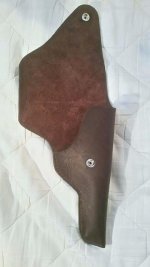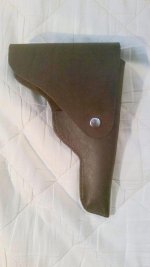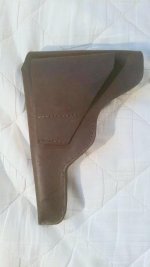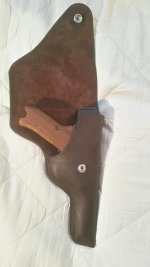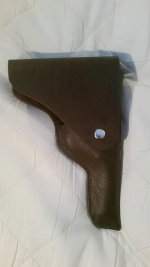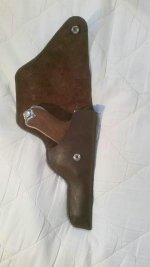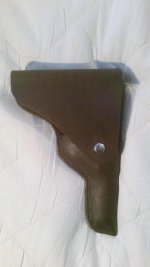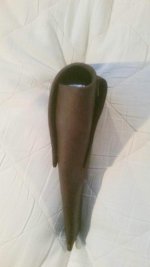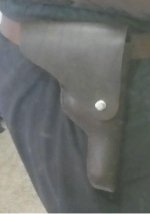LoboGunLeather
US Veteran
OK, so if the difference is so hard to tell, why is the chrome tanned such a no-no?
Is there something about the tanning process makes it THAT bad for the finish on guns? Is it bad enough to be a big deal even if the gun doesn't get left in the holster for extended periods?
Contrary to Red's analogy of the gas station attendant, who would be pumping gas every day, but still doesn't know the difference between gas & diesel, this isn't something I do every day - or something I have ever done for that matter.
A more apt analogy might be a guy who's never driven or fueled a car before. In that case not knowing the difference between the pumps wouldn't be because he's stupid, but rather it would be because he lacks any frame of reference.
That's kind of where I'm at here - no real frame of reference. That's why I'm asking the experts!
For example: I didn't even know what saddle stitching was until I looked it up.
Chrome tanning refers to producing leather from hides by immersion and infusion in solutions of chemical salts, usually heavy metals (such as chromium). The resulting leather is typically soft and pliable (thus not suitable for forming into a shape that will be held over time), and more importantly the leather remains loaded with chemical salts that can be highly corrosive. The majority of firearms are produced of steel, iron-based alloys that are subject to oxidation (also known as rust). Even so-called "stainless steels" can be etched or otherwise corroded when subjected to metallic salts such as those used in the chrome tanning processes.
Vegetable tanning utilizes tannins from plants, most commonly tree bark, to cure and preserve the hide as leather. The resulting leather is firm and can be wet-molded into shapes that can be retained over long terms of use. No residual chemical salts are involved. For this reason vegetable tanned leather is generally preferred for holster making.
Regardless of tanning processes, all leather articles tend to collect, absorb, and retain moisture from the atmosphere, from precipitation, or from the user's perspiration. Quality firearms should never be stored in leather holsters or cases because of this. The firearm should be removed from the holster after each day of use, wiped down with an oily cloth or silicone-treated cloth, and stored separately from the holster. Holsters should be stored in areas having some air flow to permit residual moisture to evaporate away; otherwise you may expect mold or fungus growths to occur.



